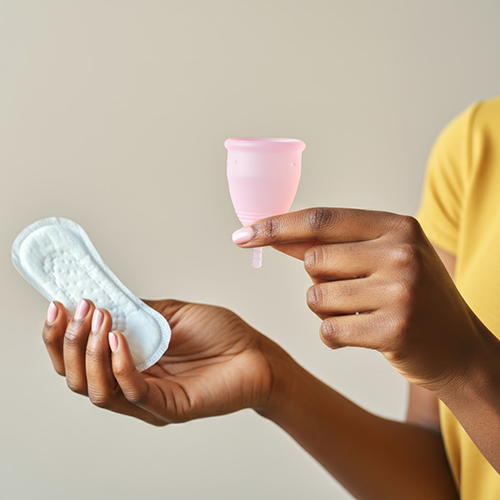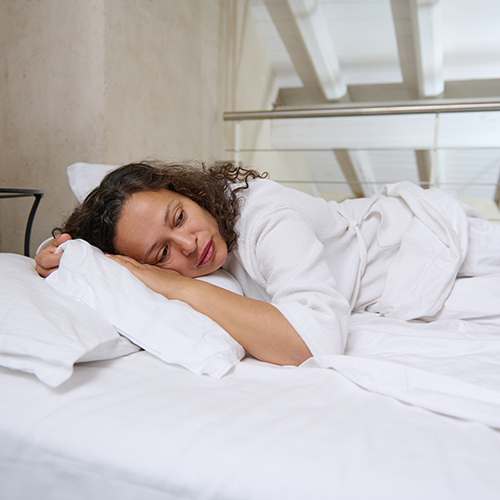



Hot Health Topic
What Is Period Poverty, Why It Matters and How You Can Help!
Every month millions of girls, women, and others who menstruate in the United States (U.S.) struggle to access basic menstrual products, including pads or tampons; these resources are critical for managing one’s period in a safe, healthy, and dignified manner. There is growing national concern regarding the rise in “period poverty” and its impact on the health and well-being of women menstruators. Period poverty is defined as the lack of access to safe and hygienic menstrual products, menstrual health education, and bathrooms with waste management options (Carneiro, 2021). Period poverty, coupled with pervasive societal stigma surrounding menstruation, can harmfully impact the educational, economic, and social lives of girls, women and others who menstruate worldwide. Note: For a more comprehensive discussion on period poverty, please view a presentation delivered by Dr. Patti Tucker (Office of Women’s Health, CDC) at the 2024 WHA Annual Conference.
Who Is at Risk?
Period poverty is often heightened for vulnerable populations, including individuals who are low-income, unhoused, or incarcerated. Students in the U.S. are also at high risk of experiencing period poverty (Sebert-Kuhlmann, 2021). Period poverty also disproportionately impacts people of color, especially Black and Latinx students (Cardoso et al., 2021; Thinx and Period, 2021). Poor or inconsistent access to period products can directly impact girls’ and women’s ability to attend school, participate in sports or other extracurricular activities (Schmitt et al., 2020), perform one’s job or employment responsibilities, and join in community or social activities.
How Does Period Poverty Impacts Girls and Women’s Health?
Period poverty can adversely impact girls’ and women’s mental and physical health. A national 2021 survey among 471 college students found that period poverty was associated with a higher likelihood of moderate/severe depression (Cardoso, 2021). Poor access to menstrual products can result in girls and women viewing their periods negatively, with such attitudes further reinforced by widespread menstrual stigma, such as perceptions that periods are “dirty” or shameful (Phillips-Howard et al., 2016). Poor menstrual hygiene practices, such as wearing a product for longer than is recommended, can also pose risks for reproductive and urinary tract infections. Notably, the COVID-19 pandemic only further exacerbated period poverty across the U.S. (Hunter et al., 2022), with many women describing having to use makeshift materials, such as paper towels or socks, due to both financial and market force barriers limiting their access to products (Schmitt et al., 2021).
How Can YOU Help?
There are many things you can do to help fight period poverty in your local community.
- Donate: Donate period products to local food banks, women’s shelters, or period product pantries. You can also donate money to organizations that work to end period poverty or host a fundraiser for them. To find an agency in your area providing period supplies, contact your local service directory in your area by calling 2-1-1 or going online to 211.org.
- Volunteer: Volunteer your time at events or organizations that support low-resource communities. This could include leading a period product drive in your community or packing menstrual hygiene kits for a local homeless services organization.
- Educate: Educate yourself and others about period poverty and menstrual health issues. This includes making sure the age-appropriate menstrual health education is available in local schools, libraries, and other community resources.
- Advocate: Contact your local and state lawmakers to ask them to support legislation that would help end period poverty. For example, you could ask them to introduce or support bills that exempt period products from sales tax or provide free period products to students and other menstruators in need.
References
Cardoso LF, Scolese AM, Hamidaddin A, Gupta J. Period poverty and mental health implications among college-aged women in the United States. BMC Womens Health. 2021 Jan 6;21(1):14. doi: 10.1186/s12905-020-01149-5.
Carneiro, M. M. (2021). Menstrual poverty: enough is enough. Women & Health, 61(8), 721–722. doi: 10.1080/03630242.2021.1970502.
Gruer, C., Hopper, K., Smith, R.C. et al. Seeking menstrual products: a qualitative exploration of the unmet menstrual needs of individuals experiencing homelessness in New York City. Reprod Health 18, 77 (2021). doi: 10.1186/s12978-021-01133-8.
Hunter E, Palovick K, Teni MT, Sebert Kuhlmann A. COVID-19 made it harder to access period products: The effects of a pandemic on period poverty. Front Reprod Health. 2022 Nov 10;4:1003040. doi: 10.3389/frph.2022.1003040.
Sebert Kuhlmann A, Teni MT, Key R, Billingsley C. Period Product Insecurity, School Absenteeism, and use of School Resources to Obtain Period Products among High School Students in St. Louis, Missouri. The Journal of School Nursing. 2024;40(3):329-335. doi:10.1177/10598405211069601.
Schmitt, M.L., Hagstrom, C., Nowara, A., Gruer, C., Adenu-Mensah, N. E., Keeley, K., & Sommer, M. (2021). The intersection of menstruation, school and family: Experiences of girls growing up in urban cities in the U.S.A. International Journal of Adolescence and Youth, 26(1), 94–109. doi: 10.1080/02673843.2020.1867207.
Schmitt, M.L., Dimond, K., Maroko, A.R. et al. “I stretch them out as long as possible:” U.S. women’s experiences of menstrual product insecurity during the COVID-19 pandemic. BMC Women's Health 23, 179 (2023). doi: 10.1186/s12905-023-02333-z.
Phillips-Howard, P. A., Caruso, B., Torondel, B., Zulaika, G., Sahin, M., & Sommer, M. (2016). Menstrual hygiene management among adolescent schoolgirls in low- and middle-income countries: research priorities. Global Health Action, 9(1). doi: 10.3402/gha.v9.33032.
Thinx & PERIOD. State of the Period 2021. New York City; 2021.

Environmental Justice Corner
Communities of Color Continue to Face Disproportionate Lead Exposure Burden
Lead, a metal commonly found in the environment, can cause harmful health effects. People are exposed to lead in many ways, such as by ingesting contaminated food or water, breathing in lead dust, or eating lead paint chips. The most common sources of lead exposure included lead-based paint on homes and buildings built before 1978. According to the American Health Homes Survey, 34.6 million homes in the U.S. still have lead-based paint that poses a risk of not properly monitored and maintained (Downes, 2022). Soil can be contaminated from paint, car exhaust, and factories. Additionally, lead plumbing materials can contaminate drinking water. Many people are exposed to lead in their homes and their workplaces. Exposure to lead can have serious damaging effects on our health and development, especially for women and children.
Note: For a more comprehensive discussion on lead exposure, please view a presentation delivered by Dr. Sharunda Buchanan (Office of Priority Projects, Innovation, and Environmental Justice, CDC; Interim Director, Office of Environmental Justice, Department of Health and Human Services) at the 2024 WHA annual conference.
Heightened Risks for Women and Children
Although lead is toxic to everyone, there are heightened risks of lead exposure for pregnant women and children. Lead exposure can lead to miscarriage, preterm birth, or fetal growth restrictions (Rodosthenous et al, 2018). It can also hurt the growing fetus, including the baby’s brain, kidneys, and nervous system, potentially causing future learning or behavioral problems (Hu et al., 2006). Children exposed to lead also experience serious health issues related to their developing brains and nervous systems, putting them at risk for behavioral and learning risks, as well as abdominal pains and anemia. Although the levels of lead in children is vastly reducing nationwide, millions are still exposed. Children younger than 6 years old are at greatest risk as their bodies absorb lead more easily than older kids and adults. Research also shows that harmful health and developmental effects of lead are being identified at increasingly lower blood lead levels (Liu et al, 2014).
Disproportionate Burden on Low-income and Communities of Color
Lead exposure is especially common amongst low-income communities of color (Benfer, 2017). Decades of discriminatory housing practices have resulted in communities of color experiencing higher rates of poverty, segregation, inferior housing, and exposure to environmental hazards. This is evidenced by the risk of lead poisoning disproportionately impacting minority children, with Black/African American children nearly three times more likely than white children to have elevated blood lead levels (Jones et al., 2009). This risk of lead poisoning among children in federally assisted housing is even higher, with the U.S. Department of Housing and Urban Development (HUD) estimating that more than 62,000 public housing units nationwide are still in need of lead abatement services (HUD, 2022). There remains an urgent need for federal, state, and local level government agencies to proactively respond and reduce the hazardous impact of lead on our communities.
Lead Exposure Prevention and Diagnosis
If you are concerned that you or your child may have been exposed to lead, do not hesitate to act. Visit your local health provider, share your concerns, and request a blood lead test. Blood tests are the best way to determine if a child has been exposed to lead, as most children do not show any symptoms.
References
Downes, Joseph. 2022. “Lead Hazards in the U.S. Housing: The American Healthy Homes Survey II.” The U.S. Department of Housing and Urban Development, Officer of Policy Development and Research.
Benfer, E.A. 2017. Contaminated Childhood: Chronic Lead Poisoning Among Low-Income Children and Communities of Color. Health Affairs.
Hu H, Téllez-Rojo MM, Bellinger D, Smith D, Ettinger AS, Lamadrid-Figueroa H, Schwartz J, Schnaas L, Mercado-García A, Hernández-Avila M. Fetal lead exposure at each stage of pregnancy as a predictor of infant mental development. Environ Health Perspect. 2006 Nov;114(11):1730-5. doi: 10.1289/ehp.9067.
Jianghong Liu, PhD; Xianchen Liu, MD, PhD; Wei Wang, PhD; Linda McCauley, PhD; Jennifer Pinto-Martin, PhD; Yingjie Wang, MS; Linda Li, BA; Chonghuai Yan, PhD; Walter J. Rogan, MD. 2014. Blood Lead Concentrations and Children’s Behavioral and Emotional Problems: A Cohort Study. JAMA Pediatr. doi:10.1001/jamapediatrics.2014.332.
Jones RL, Homa DM, Meyer PA, Brody DJ, Caldwell KL, Pirkle JL, Brown MJ. Trends in blood lead levels and blood lead testing among US children aged 1 to 5 years, 1988-2004. Pediatrics. 2009 Mar;123(3):e376-85. doi: 10.1542/peds.2007-3608. PMID: 19254973.
Rodosthenous RS, Burris HH, Svensson K, Amarasiriwardena CJ, Cantoral A, Schnaas L, Mercado-García A, Coull BA, Wright RO, Téllez-Rojo MM, Baccarelli AA. 2017. Prenatal lead exposure and fetal growth: Smaller infants have heightened susceptibility. Environ Int. 99:228-233. doi: 10.1016/j.envint.2016.11.023.
U.S. Department of Housing and Urban Development Office of Healthy Homes and Lead Hazard Control. 2011. American Health Homes Survey: Lead and Arsenic Findings. U.S. Department of Housing and Urban Development Office.
U.S. Department of Housing and Urban Development (HUD). 2022. HUD’s Oversight of Lead-Based Paint Hazard Remdiation in Public Housing. U.S. Department of Housing and Urban Development, Office of Public and Indian Housing.

The Reading Nook
Summer 2024 Featured Book Selections
Silent Spring – Written by Rachel Carson
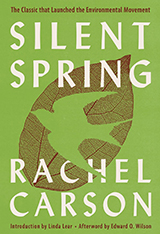
Silent Spring, an environmental science book published in 1962, focuses on harmful effects of pesticide usage on the environment. Carson argued that these chemicals, used widely in agriculture, were causing irreversible harm to wildlife, plants, and humans. The book highlights how pesticides can enter the food chain and accumulate in the tissues of animals and humans, causing severe medical problems for humans. Importantly, Silent Spring played critical role in raising awareness about environmental health issues and eventually led to policy changes and the creation of the U.S. Environmental Protection Agency. In the introductions, acclaimed biographer Linda Lear, author of Rachel Carson: Witness for Nature, notes “Wonder and humility are just some of the gifts of Silent Spring. They remind us that we, like all other living creatures, are part of the vast ecosystems of the earth of the earth…this is a book to relish: not for the dark side of human nature, but for the promise of life’s possibility.”
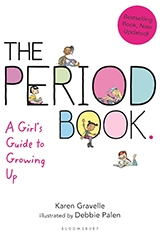
The Period Book: A Girl's Guide to Growing Up – Written by Karen Gravelle and Jennifer Gravelle
The Period Book by Karen Gravelle and her fifteen-year-old niece, Jennifer Gravelle, offers practical answers to questions about menstruation, such as what a period is, whether to see a doctor, and what a pad feels like. Guiding readers through the physical, emotional, and social changes that come with menstruation, this book addresses issues related to pimples, mood swings, new social expectations and celebrates the empowerment that comes with menstruation.

Recenter, Refocus, Recharge
Why Is My Sleep Getting Worse? How Women’s Sleep Changes over the Lifespan and What You Can Do
Getting a good night’s rest can enhance your mood and help prevent health issues. Your body needs adequate time every day for restorative rest. Some sleep disorders, such as sleep apnea, insomnia, and restless leg syndrome, can make it harder to fall or stay asleep. This can lead to drowsiness during the day and negatively impact our mental health. Research also shows that a lack of sleep increases our risk for heart disease, obesity, and infections.
Women are one of the most sleep-troubled demographics in the United States (U.S.). This includes trends which highlight how adult women under the age of 50 are sleeping less or feeling less satisfied with their sleep and associated stress (Fioroni and Foy, 2024). Reasons for women’s poor sleep include a range of social, biological, and physiological factors. Social factors can include that many women often take on greater amounts of caregiving responsibilities within their households, including managing the “mental load,” the invisible, yet exhaustive, cognitive, and emotional labor involved in managing household tasks, family responsibilities and emotional well-being (Dean et al., 2021). While juggling the many facets of their personal and professional lives, many women often sacrifice sleep or experience trouble shutting off the constant to do lists in their minds while trying to fall sleep.
Biological and physiological factors also impact women’s sleep. Hormonal changes during menstruation, pregnancy, perimenopause, and menopause can all impact women’s sleep. This includes:
- Menstruation: For women with premenstrual symptoms or painful menstrual cramps, it is common to experience poorer sleep quality (Baker & Lee, 2018).
- Pregnancy: Sleep issues are common in pregnancy, especially in the third trimester with women waking up more often than usual because of increased urination needs, heartburn, leg cramps, general physical discomfort, and psychological distress (Won, 2015). Notably, the National Sleep Foundation’s Women and Sleep poll found the 78% of women reported more disturbed sleeping during pregnancy than any other time in their lives (NSF, 1998).
- Perimenopause & menopause: Hormone changes during perimenopause, including hot flashes —or “night sweats”.Night sweats become more frequent as a person nears menopause and may continue for years following one’s last menstrual period. However, even women who don’t experience hot flashes report that their sleep is worse during perimenopause. This may be due to the brain becoming more active while sleeping during this phase, which makes one sleep more lightly and experience poorer quality sleep (Swan Study, 2024).
- Postmenopausal women are also two to three times more likely to develop sleep apnea, a common and potentially serious breathing disorder, due to the loss of reproductive hormones like estrogen and progesterone (Jehan et al., 2016). To learn more about sleep problems and menopause, visit the National Institute on Aging (NIA).
Eight Recommendations for Better Sleep. Although you may not be able to control some of factors impacting your body and sleep experiences, there are some practical steps you can take to promote healthy sleep habits. This includes the following:
- Sleep environment: Keep your bedroom dark, quiet, and cool. It may be useful to use a sleep mask to keep out light or ear plugs to reduce external noise.
- Bedtime routine: Create and follow a nightly bedtime routine to help relax and wind down. This may include taking a warm bath, reading a book, or listening to music or a podcast.
- Sleep habits: Always try and go to sleep when you initially feel sleepy. Try to wake up at the same time each morning.
- Eating habits: Try not to not eat or drink very much within 3 hours of bedtime.
- Nap considerations: Make sure to not take naps after 3:00 p.m.
- Minimize caffeine and alcohol, especially late in the day: Do not drink caffeinated drinks late in the day or at night. Also, be careful drinking alcohol in the evenings as even a small amount can impact the quality of your sleep.
- Do not exercise close to your bedtime: Exercise earlier in the day if possible. When you exercise too close to your bedtime, it can make it harder to sleep.
- Avoid screens: Do not look at lighted screens like a laptop, television, or smartphone before bed.
For more tips on building healthy sleep habits, please visit the NIA’s website.
References
Baker FC, Lee KA. (2018). Menstrual Cycle Effects on Sleep. Sleep Med Clin;13(3):283-294. doi: 10.1016/j.jsmc.2018.04.002.
Dean, L., Churchill, B., & Ruppanner, L. (2021). The mental load: building a deeper theoretical understanding of how cognitive and emotional labor overload women and mothers. Community, Work & Family, 25(1), 13–29.
Fioroni, S., Foy, D. (2024, May 30). Americans Sleeping Less, More Stressed. Gallup News.
Jehan, S., Auguste, E., Hussain, M., Pandi-Perumal, S.R., Brzezinski, A., Gupta, R., et al. (2016). Sleep and Premenstrual Syndrome. Journal of Sleep Medicine and Disorders; 3(5): 1061
Jehan S, Auguste E, Zizi F, Pandi-Perumal SR, Gupta R, Attarian H, Jean-Louis G, McFarlane SI. (2016) Obstructive Sleep Apnea: Women's Perspective. J Sleep Med Disord;3(6):1064.
Matthews KA, Kravitz HM, Lee L, Harlow SD, Bromberger JT, Joffe H, Hall MH. Does midlife aging impact women's sleep duration, continuity, and timing?: A longitudinal analysis from the Study of Women's Health Across the Nation. (2020). Sleep;43(4). doi: 10.1093/sleep/zsz259.
National Sleep Foundation. (1998). Women and sleep. Arlington, VA: National Sleep Foundation.
Swan Study. (2024). Effects of Sleep Problems During Menopause. Swan Study.
Won CH. Sleeping for Two: The Great Paradox of Sleep in Pregnancy. (2015). J Clin Sleep Med. 11(6):593-4. doi: 10.5664/jcsm.4760.

Multimedia Showcase
In this newsletter, we are highlighting our webinars. Many of you attended the webinars and informed us that you gained valuable information on many health topics. You can access these webinars at any time. Simply visit our webinar page to watch recordings and benefit from the expertise of our presenters. Each session includes a comprehensive list of resources and features a Q&A segment with questions submitted by attendees.

Nutrition Corner
Vegan Oat and Mushroom Meat
This delicious, healthy dish was prepared as part of the cooking demonstration at the April 2024 Women’s Health Awareness Wellness Conference in Durham by Chef Eddie Wilson CEC, PCEC, CCA, AAC. As the Executive Chef at North Carolina State University, Chef Eddie presents the vegan oat and mushroom meat as a vegetable forward way of preparing a ground meat alternative by using items you may already have in your pantry. This serves as a base and can be used with any recipe that calls for a ground meat- tacos, gyros, meatballs, sausage, Sloppy Joes and more. Nutritional yeast, a good source of vitamins, minerals, and protein, also adds a bit of umami to the dish.
For his demonstration, Chef Eddie prepared tacos, suggesting serving the “meat” in a taco shell of your choice and topping with your favorite salsa.
Yield: 3 pounds
Ingredients
- 3 1/3 cups Water
- 16 oz Mushrooms Chopped
- 1 large Onion Chopped
- ½ cup Nutritional Yeast
- 1 Tbsp Italian Herb Blend (dry)
- 1 Tbsp Garlic Powder
- 1 ¼ tsp Smoked Paprika
- 1 tsp Kosher Salt
- ¼ tsp Ground Black Pepper
- 3 cup Rolled Oats (GF)
Directions
In a saucepan over medium heat combine water, mushrooms, onion, yeast and all spices and herbs. Bring to a boil and reduce to a simmer. Simmer uncovered for 10 minutes and remove from heat. Add oats to the hot mushroom mixture and allow to cool. Adjust seasoning as desired.
- Can be used immediately or stored for future use.
- Store 2 days covered, refrigerated.
- Can be frozen for up to 6 months.
This seasoning provides a healthy option to store bought taco seasonings.
Taco Seasoning
Yield: Approximately ½ cup
- 3 Tbsp Chili Powder
- 2 Tbsp Cumin
- 1 Tbsp Paprika or ½ Tbsp each Paprika and Smoked Paprika
- 1 Tbsp Salt
- 1 tsp Garlic Powder
- 1 tsp Oregano (dry)
- 1 tsp Black Pepper
- ½ tsp Ground Chipotle Pepper
Can be stored up to 3 months in a closed container.
This seasoning provides a healthy option to store bought taco seasonings.

Sister to Sister: Share Your Story
Every year at the annual Women’s Health Awareness (WHA) conference, hundreds of women come together to proactively access health screenings and participate in empowering health education sessions. These sessions provide an opportunity for women to voice their questions and concerns with national women’s health experts and advocates. Find below a few testimonials shared by women that participated in the April 2024 WHA conference held in Durham, NC and three satellite sites across the state.
Make a difference in the life of another sister by sharing your WHA experience and story. Send us your testimonials. Tell us about screenings that helped you identify any health issues. Share your thoughts on what WHA means to you and to the community or share a congratulatory message to WHA from yourself or a group of Sista’s! Flash back over the years of WHA and share your stories, pictures, or video clips. Entries will be shared in the WHA over the years segment for the next WHA conference as well as in future WHA newsletters. Submit your story and you may be entered into a raffle drawing.

Let's Stay in Touch





